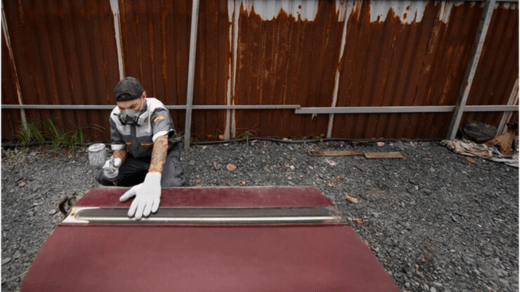Flat roof repair might seem challenging, but with the right technique and a little know-how, you can confidently address it. These flat roofs, common in residential and commercial buildings, come with daunting tasks. However, understanding and addressing these challenges can significantly prolong the lifespan of your roof and prevent costly future replacements.
Scroll down to learn more about this repair process.
Why Is It Important to Repair Flat Roofs in Residential Roofing Systems?
Flat roofs provide a modern, cost-effective, and efficient design option for residential and commercial buildings. However, they can be very difficult to handle when they leak. In a residential roofing system, prompt handling of flat roof leaks is vital to prevent further damage to the building. Proper roof repair can save time and money and alleviate long-term headaches.
Read more to tackle a small leak or more extensive damage with practical tips and insights on handling flat roof repair effectively.
Perform an In-depth Inspection
Start by conducting an in-depth inspection of your flat roof.This includes carefully inspecting the roof’s surface for any signs of damage, such as blisters, cracks, or places where water has accumulated. Pay close attention to seams and edges, as they are common trouble spots. Consider having a professional evaluate your roof if you require more time to do this task or if it has several levels.
Clear Away Debris and Standing Water
Remove any dirt, leaves, and branches from the roof before beginning any repairs. In addition to improving your visibility of the trouble spots, this stops debris from inflicting more damage. Clear the area with a leaf blower or broom. Use a mop or a wet/dry vacuum to remove any standing water you see. Remember that standing water is a sign of poor drainage or a low area that would require attention during the repair.
Choose the Right Flat Roof Repair Materials
The selection of material for flat roof repair depends on the existing roofing material and the extent of the damage.For minor cracks, a quality roofing sealant or patch kit may suffice. You might need roofing fabric and a bitumen coating for larger areas to create a new waterproof layer.Be sure to consult a roofing professional to select materials matching your existing roof type for the best results.
Make the Repair
After identifying the issue and collecting the necessary materials, it’s time to start the repair process.
Here’s how to fix common flat roof repairs:
Patching Holes and Cracks:
- After cleaning the area around the damage, cover it with a patch and apply roofing glue or sealer.
- Make sure the patch extends a few inches beyond the damaged area.
- Smooth out any air bubbles with a strong press.
Addressing Blisters: To remove blisters caused by trapped air, carefully cut away the damaged material. Before applying new roofing material, ensure the area is completely dried out before applying the patch and sealing it with adhesive.
Fixing Flashing: To fix damaged or loose flashing around edges, chimneys, or vents, remove the old flashing and clean the affected area. Next, install fresh flashing and fasten it with glue or roofing nails. To stop leaks in the future, make sure all corners are properly sealed.

